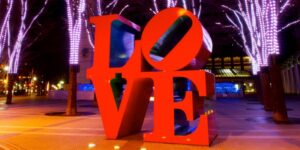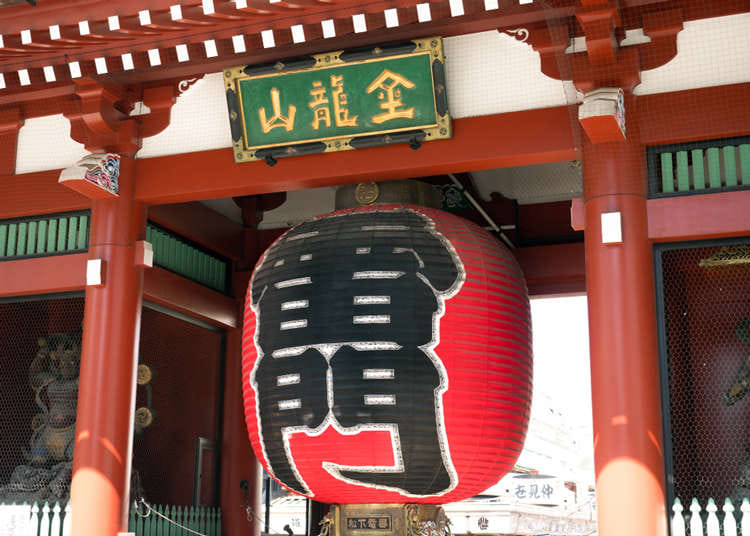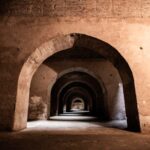Japan is a symphony of natural marvels and cultural treasures, where modernity dances with tradition, and beckons adventurers to explore its contrasting yet harmonious facets. Majestic mountains, like Mount Fuji, touch the heavens while Zen temples exude tranquility. Serene waterfalls cascade through lush forests, whispering ancient secrets. Sakura blooms paint landscapes with ethereal hues. In every corner, nature and architecture harmonize, a testament to Japan’s captivating beauty.
TOKYO: A DYNAMIC FUSION
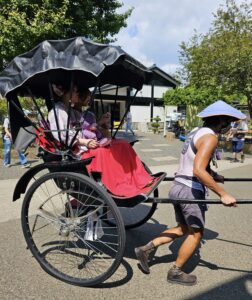 Tokyo, a pulsating metropolis, with its innovation and tradition merges seamlessly. Skyscrapers pierce the sky, each a testament to cutting-edge architecture, while the historic district of Asakusa whispers stories of old Japan. Asakusa is a captivating blend of tradition and modernity in Tokyo. Its narrow streets wind through an old-world atmosphere, where ancient charm meets contemporary vibrancy. At the heart of Asakusa stands Senso-ji, a centuries-old Buddhist temple enveloped in incense and whispers of devotion. The district buzzes with life, and its famed kimono rentals bring history to life, allowing visitors to wander in elegant garments amidst the echoes of a bygone era. As day turns to night, the lantern-lit lanes unveil a mystical allure, a testament to Asakusa’s enchanting ability to bridge the gap between past and present.
Tokyo, a pulsating metropolis, with its innovation and tradition merges seamlessly. Skyscrapers pierce the sky, each a testament to cutting-edge architecture, while the historic district of Asakusa whispers stories of old Japan. Asakusa is a captivating blend of tradition and modernity in Tokyo. Its narrow streets wind through an old-world atmosphere, where ancient charm meets contemporary vibrancy. At the heart of Asakusa stands Senso-ji, a centuries-old Buddhist temple enveloped in incense and whispers of devotion. The district buzzes with life, and its famed kimono rentals bring history to life, allowing visitors to wander in elegant garments amidst the echoes of a bygone era. As day turns to night, the lantern-lit lanes unveil a mystical allure, a testament to Asakusa’s enchanting ability to bridge the gap between past and present.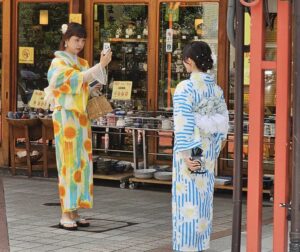
The bustling Shibuya Crossing enchants with its organized chaos, a modern-day spectacle. Explore the fashionable districts of Harajuku and Omotesando, where trendsetting youth and haute couture harmonize.
Cultural Gems:
Delve into Japan’s cultural heart by visiting Tokyo’s Imperial Palace, a serene oasis amidst the urban sprawl. Discover the Meiji Shrine, an emblem of Shinto reverence nestled within the tranquil Yoyogi Park. A stroll through Ueno Park reveals a profusion of museums and cherry blossoms, encapsulating Tokyo’s cultural tapestry.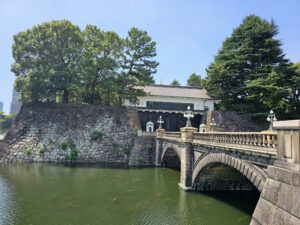
NIKKO: TRANQUILITY UNVEILED:
Nikko, a serene sanctuary, offers a kaleidoscope of experiences that epitomize Japan’s allure. Embark on a remarkable journey as I traverse the bustling streets of Tokyo and find solace amidst Nikko’s natural wonders. Nikko (日光, Nikkō) is a town at the entrance to Nikko National Park, most famous for Toshogu, Japan’s most lavishly decorated shrine and the mausoleum of Tokugawa Ieyasu, the founder of the Tokugawa shogunate.
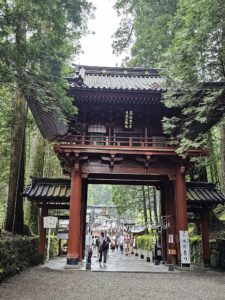 The Toshogu Shrine, an architectural marvel adorned with intricate carvings, stands as a tribute to Japan’s artistic finesse. Nikko had been a center of Shinto and Buddhist mountain worship for many centuries before Toshogu was built in the 1600s, and Nikko National Park continues to offer scenic, mountainous landscapes, lakes, waterfalls, hot springs, wild monkeys, and hiking trails.
The Toshogu Shrine, an architectural marvel adorned with intricate carvings, stands as a tribute to Japan’s artistic finesse. Nikko had been a center of Shinto and Buddhist mountain worship for many centuries before Toshogu was built in the 1600s, and Nikko National Park continues to offer scenic, mountainous landscapes, lakes, waterfalls, hot springs, wild monkeys, and hiking trails.
Nikko welcomes with a complete shift in ambiance. Encircled by the embrace of mountains and forests, this UNESCO World Heritage site is a sanctuary of serenity.
Nature’s Symphony:
 Nikko’s natural wonders captivate the soul. The dramatic Kegon Falls, cascading majestically into Lake Chuzenji, mirror the grandeur of Japan’s landscapes. The almost 100-meter-tall Kegon Waterfall (華厳の滝, Kegon no taki) is the most famous of Nikko’s many beautiful waterfalls. In fact, it is even ranked as one of Japan’s three most beautiful falls, along with Nachi Waterfall in Wakayama Prefecture and Fukuroda Waterfall in Ibaraki Prefecture.
Nikko’s natural wonders captivate the soul. The dramatic Kegon Falls, cascading majestically into Lake Chuzenji, mirror the grandeur of Japan’s landscapes. The almost 100-meter-tall Kegon Waterfall (華厳の滝, Kegon no taki) is the most famous of Nikko’s many beautiful waterfalls. In fact, it is even ranked as one of Japan’s three most beautiful falls, along with Nachi Waterfall in Wakayama Prefecture and Fukuroda Waterfall in Ibaraki Prefecture.
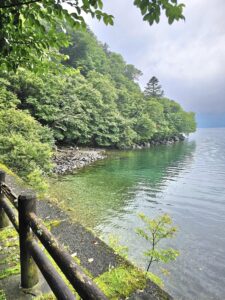 Kegon Waterfall is the only exit for the waters of Lake Chuzenji. It can be seen from a free observation platform that is easily accessible on foot, as well as from a paid platform at the base of the falls. The paid platform is accessed via a 100-meter-deep elevator and offers more impressive views. The sight of Kegon Waterfall in combination with Lake Chuzenji can be enjoyed from Akechidaira Observatory, which is accessible by ropeway from Akechidaira Plateau.
Kegon Waterfall is the only exit for the waters of Lake Chuzenji. It can be seen from a free observation platform that is easily accessible on foot, as well as from a paid platform at the base of the falls. The paid platform is accessed via a 100-meter-deep elevator and offers more impressive views. The sight of Kegon Waterfall in combination with Lake Chuzenji can be enjoyed from Akechidaira Observatory, which is accessible by ropeway from Akechidaira Plateau.
Kegon Waterfall is also a popular autumn color spot. The trees around the waterfall are usually most colorful from mid to late October. In the winter the waterfall is impressive as well when it freezes almost completely solid.
Chuzenji and the Kegon Falls come as Nikko’s second tourist site after the Toshogu’s religious complex and make an interesting nature outing
The tranquil beauty of Lake Yunoko and Senjogahara Marsh paints a serene picture, a retreat into nature’s embrace.
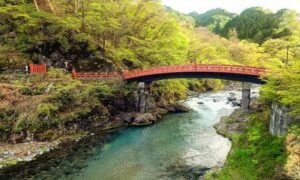 The Shinkyo Bridge (神橋, Shinkyō, “sacred bridge”) stands at the entrance to Nikko’s shrines and temples and technically belongs to Futarasan Shrine. The bridge is ranked as one of Japan’s three finest bridges together with Iwakuni’s Kintaikyo and Saruhashi in Yamanashi Prefecture.
The Shinkyo Bridge (神橋, Shinkyō, “sacred bridge”) stands at the entrance to Nikko’s shrines and temples and technically belongs to Futarasan Shrine. The bridge is ranked as one of Japan’s three finest bridges together with Iwakuni’s Kintaikyo and Saruhashi in Yamanashi Prefecture.
The current Shinkyo was constructed in 1636, but a bridge of some kind had marked the same spot for much longer, although its exact origins are unclear. Until 1973, Shinkyo was off-limits to the general public. It underwent extensive renovation work in the late 1990s and early 2000s, and visitors can now walk across the bridge and back for an entrance fee.
Harmony of the Journey: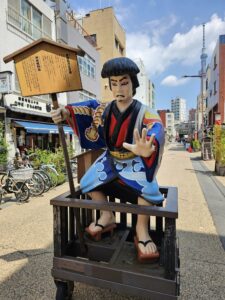
From Tokyo’s bustling streets to Nikko’s tranquil retreats, the journey between the two unveils the spectrum of Japan’s essence. The shinkansen, or bullet train, takes you seamlessly from urban vibrancy to rural charm, highlighting Japan’s commitment to efficiency and comfort.
In Tokyo and Nikko, Japan’s past and present coalesce, offering a remarkable journey for every traveler. The dynamic energy of Tokyo and the serene beauty of Nikko create a symphony of experiences that resonate long after you’ve returned home. Whether it’s the neon lights of Shinjuku or the rustling leaves of Nikko’s forests, this Japanese escapade promises a profound exploration of tradition, innovation, and the eternal harmony between man and nature.
